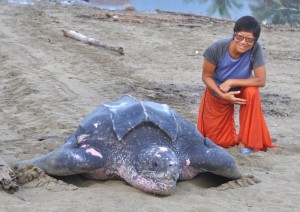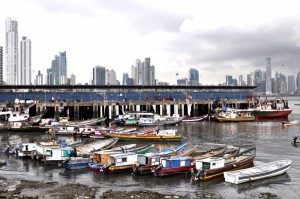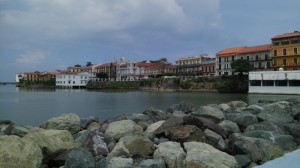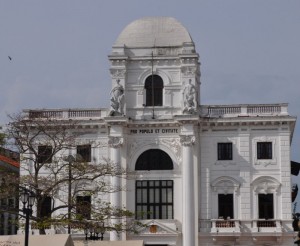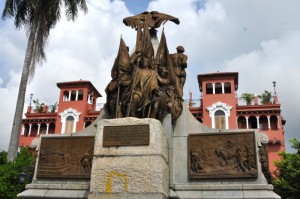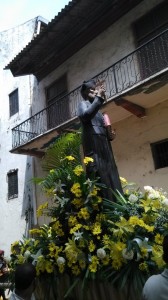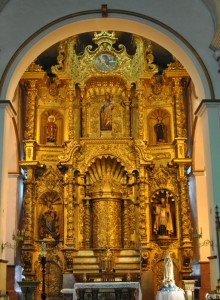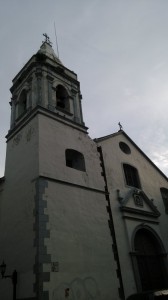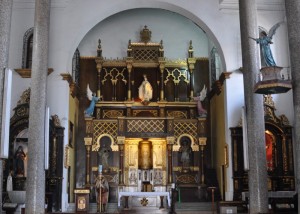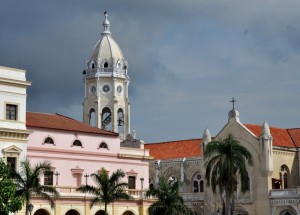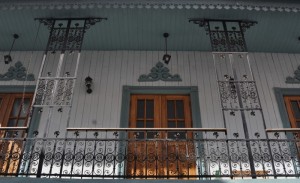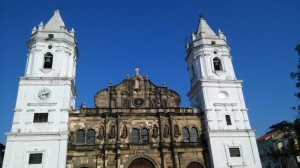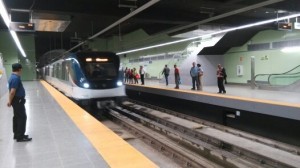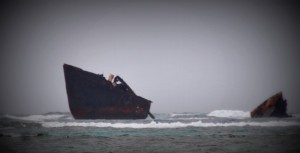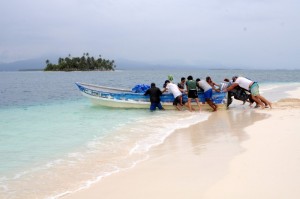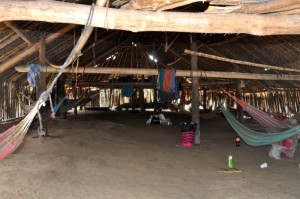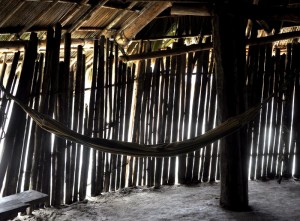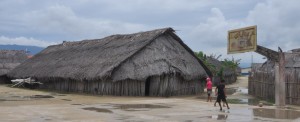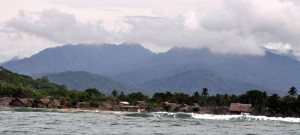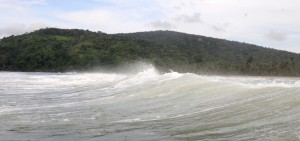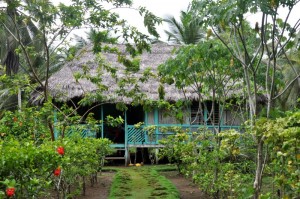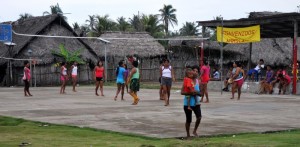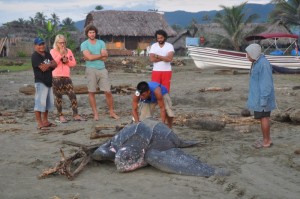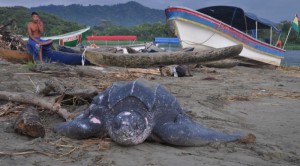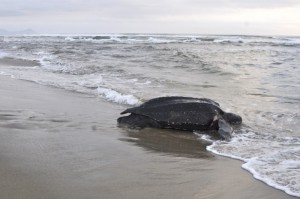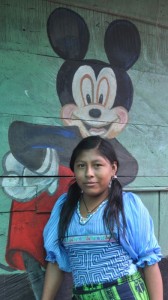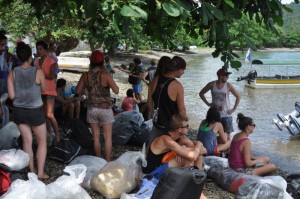I returned to Panama in order to take a boat to Colombia and visit Bogota before ending my South American trip. I had a nice time spending six nights in Casco Viejo (Old Town) in Panama City and three nights in the San Blas Archipelago. May 25 Sunday: Belize City (GMT -6hrs) – Panama City (GMT -5hrs)
I left Belize City around 5:30pm and had a surprisingly pleasant stop-over at El Salvador. I found a business lounge where I had decent food, a gin tonic and use of free Wi-Fi. I finally arrived at Panama at 11:45pm. This time, the airport was empty. I went through the immigration and customs services without trouble. I took a taxi ($23) to Magnolia Inn in Casco Viejo. The driver was friendly and I intended to give him $25. When I gave him $30, he said he did not have enough change. As a result, he forced me to pay him $26. This seems a common trick of taxi drivers.
May 26- 30 Monday – Friday: Panama City
Panama City
The city of Panama founded in August 1519 by Pedro Arias Dávila was the first European settlement along the Pacific. It was also the starting point for expeditions to conquer the Inca Empire in 1532 and had served as a stopover point for boats bringing gold, silver and other goods to Spain. The city was destroyed when pirate Henry Morgan sacked and set fire to it. In January 1673, a new city was established in a peninsula located 8km from the original settlement. The devastated city and the new city are known as Panama Viejo and Casco Viejo respectively. Both are now World Heritage Properties and popular tourist attractions.
Panama City today has a population of about 1 million and has become a vibrant economic, financial and commercial centre with the largest airport in Central America and the world’s busiest and most important canal. While the commercial part of the city is modern with many sky-crappers, Casco Viejo retains its colonial charm featuring colonial, French, Caribbean, art deco and Republican architectural styles.
I like Casco Viejo on first sight and am glad to return. Mangolia Inn run by an American is an excellent place to recuperate: it is quiet without a partying crowd. It has an excellent location just behind the Plaza Mayor. The rooms are air-conditioned and there is a nice kitchen.
I had a good rest and managed to do two things. I took three more Spanish lessons with a private teacher. Each lesson lasted for two hours. I have made no progress with my Spanish as I had been travelling with English speaking groups most of the time! I also updated my website.
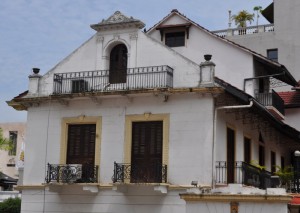 |
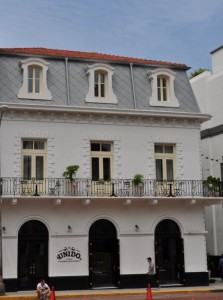 |
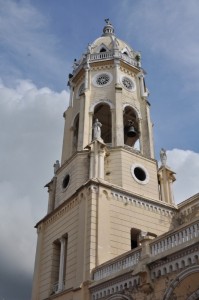 |
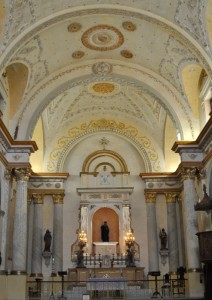 |
Casco Viejo has some 800 buildings of different architectural styles and is best explored on foot at different time of the day. I have spent many hours wandering around and appreciating the remarkable architectural mix and the elegant squares and parks. I passed by the Plaza de la Independence, Palacio Municipal and Iglesia Catedral on my way to the Spanish School. After the lesson, I took different routes passing by the Plaza de Francia at the tip of the southern point of the old town, Teatro Nacional (1907), Iglesia de San Francisco, Parque Bolivar and the ruins Santo Domingo. The other interesting cluster includes the Iglesia de la Merced, ruins at La Compañia de Jesus, Parque Herrera and Iglesia de San José with its famous Golden Altar saved from the Panama Viejo. About half of the buildings are under renovation.
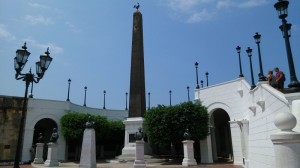 |
|
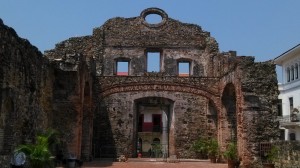 |
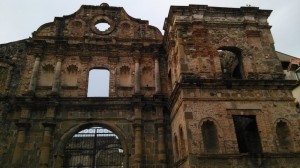 |
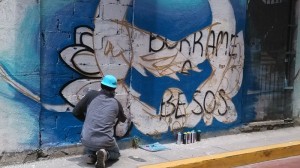 |
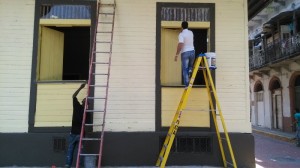 |
I have also ventured outside Casco Viejo on three occasions. I either walked along the waterfront or take the Metrobus or the new metro. Hence, I have a better feel about the place than most tourists who normally only hang out in the bars in Casco Viejo or go everywhere in taxi. I tried to visit Panama Viejo on a raining day. It looked so miserable that I did not bother to get off the bus!
May 31 – June 3 (Saturday – Tuesday): 4-day Boat Trip from Panama to Colombia
San Blas Archipelago lying off the north coast of the Isthmus of Panama and home to the Kuna Indians, consists of 378 islands with inhabitants on 49 islands. The Kuna worship a god named Erragon and have its own culture. Many Kuna are hunters and fishermen. Older women still wear their traditional costume: a red head cloth with certain designs, a colourful top, a sarong-like skirt and a wide band with embroidery around the waist. But the most distinguishable feature is the colourful bead-wear on their legs.
Day 1 (May 31): I had to get up at 4:30am as I was supposed to be picked up between 5 and 5:30am. Four young men from Ireland were also staying in the same hostel. At 5:20am Olivia, our young American tour leader, turned up telling us to walk over to another hostel to join the group. Our group had 34 participants. I am the oldest in the group as most of them are in their 20s and 30s.
We travelled in half a dozen of 7-seater vehicles and set off just before 6am. Later we stopped in a supermarket to get drink and snacks. More of my young people got themselves well stocked up with alcohol. I was so tired that I slept most of the way to Carti, a small port. We split into two groups and I took the boat with 20 seats i.e. 4 in a row.
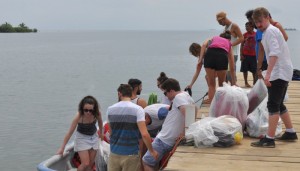 |
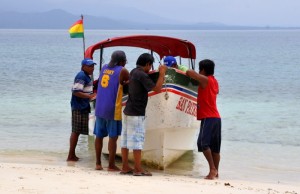 |
The boat is small with most uncomfortable and hard seats. I was relieved when we stopped at a small island called Pelican Island for lunch at noon. At 1:30pm we were taken to a nearby island called Cocopanderia where we spent the first night.
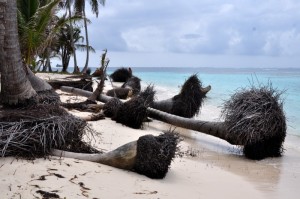 |
|
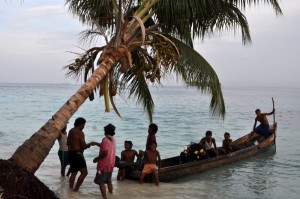 |
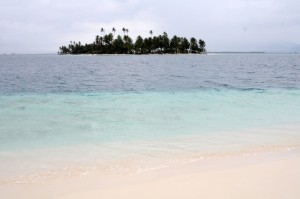 |
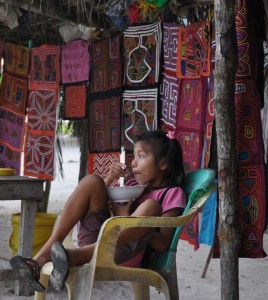 A Kuna family lives on this tiny island. The 72-year-old couple lives with their son and daughter-in-law and a 7-year-old grand-daughter. The old lady is the decision-maker and keeps the money.
A Kuna family lives on this tiny island. The 72-year-old couple lives with their son and daughter-in-law and a 7-year-old grand-daughter. The old lady is the decision-maker and keeps the money.
I like peace and tranquility and find this island charming and picturesque. There are also two idyllic islands opposite our island. The sea was not too rough and I wanted to swim over but was nervous. Luckily, Karen and Stephen from Sydney were going and I joined them. I succeeded to reach the shore of one of the islands which is less than 150m away (the island in the photo above).After the swim, I had a beer ($2) and a rest. Then I watched the family preparing our dinner. The old man and his son spent two days in harvesting 25kg of lobsters and 10kg of octopus for us.
The lobsters were boiled and served without sauce: in my view, this is the best way to eat fresh lobsters! I then helped the old man to cut the octopus into small pieces before it was mixed with onions and fresh lime juice. I had a most wholesome and delicious dinner!
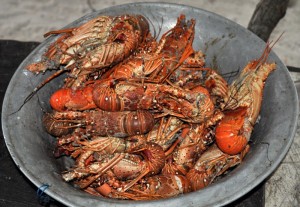 |
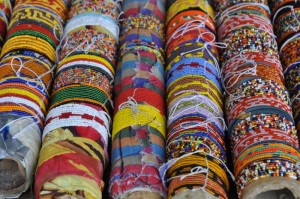 |
I slept the first time in my life in a hammock inside a hut. The hammock is comfortable and cool. I was surprised that I had no mosquito or bug bite. Around 4-5am, it started to rain heavily and the thunders woke me up.
Day 2 (June 1) – We had breakfast at 8am. Olivia said we would be off at 9am. But we did not set off till 10am. The original plan was to make a short trip to Tupile, a Kuna village where we spent the second night. As the village had bad spirits, a shaman had to perform some rituals to cleanse the place. The ceremony was not yet over and we were not allowed to visit it. Hence Olivia had to change plan for the itinerary for the second day and we would go to stay in Caladonia, a Kuna village which we were supposed to spend the third night.
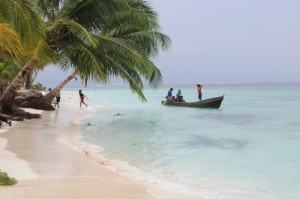 |
|
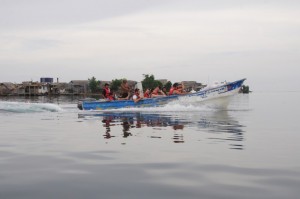 |
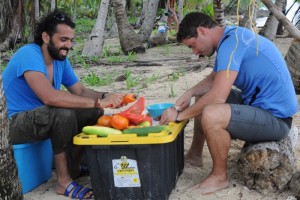 |
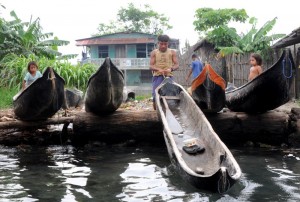 |
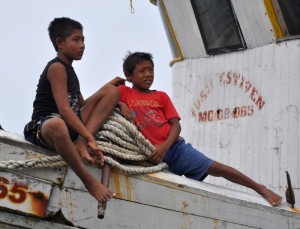 |
We had a tough day today spending some five hours on the boat. In the morning, we had a two-hour ride before having a sandwich lunch on a small island. After lunch and a swim, we spent three hours before reaching Caladonia.
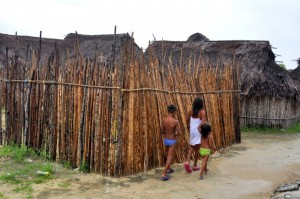 |
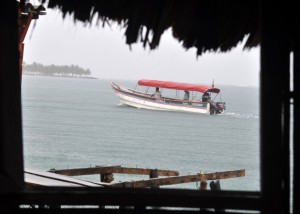 |
The weather was cloudy with occasional showers. Hence we did not miss much by spending most of the time in travelling. As we were in Caladonia a day earlier than scheduled, we ran into the group which was on its way to Panama City. So the guest house had to provide accommodation for 64 persons! Our group was arranged to sleep in hammocks in a village communal hall close to the guesthouse.
It started to rain. We had a guided walk and met one of the seven leaders of the village in an assembly hall (right next to the communal hall). I learn that the village has about 1,000 inhabitants. Kuna do not like tourists taking photos and we need to seek permission. In any case, they expect you to pay $1 for a photo. No thanks!
We had dinner at 8pm in a restaurant. I had fried chicken and rice which cannot be compared with the lobster dinner. I slept early while most people stayed up late drinking and chatting.
Day 3 (June 2) – The longest and the best day of the whole trip
It was still raining when I wandered around the village at 7am. The tempo is slow and life looks simple here. The huts with a leafy roof and bamboo/wood walls are small and look flimsy.
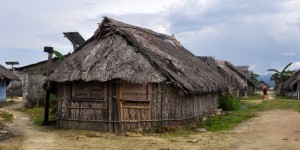 |
|
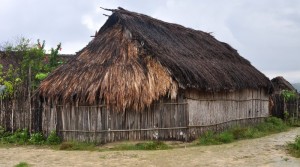 |
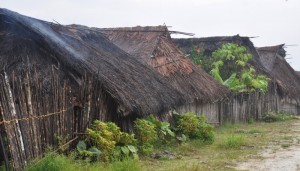 |
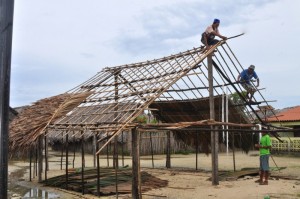 |
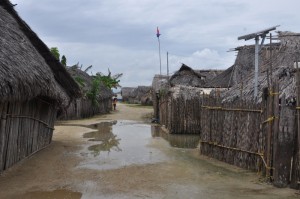 |
We had a continental breakfast with bread, cereal and coffee at 8am. Olivia arranged the boat to take us to a nearby island to swim and snorkel at 10am. The water is nice and warm and some spotted two sharks and squids near a reef. I saw some fish and coral.
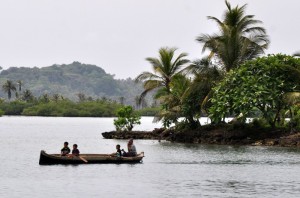 |
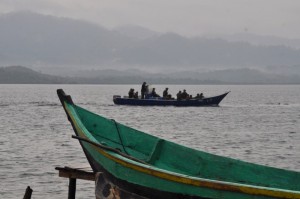 |
We had a sandwich lunch before boarding the boat for a village called Armila close to the border. The trip took about two hours but the big waves kept us waiting outside the bay for some 20 minutes. The boatmen had to wait for the right moment to steer the boat into the harbour. Our boat finally landed about 4pm (the other smaller boat arrived at least half an hour earlier).
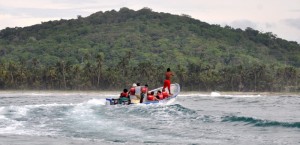 |
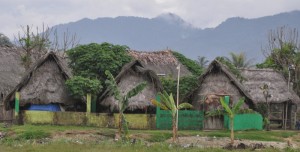 |
Here, we were split into smaller groups and stayed with different families. I stayed in a room with Andy and Ellie from Perth. I like this village which is authentic with nice locals. It also seems more affluent with bigger and better built huts/houses. Many families have satellite dishes and TVs. The village must have a baby bloom: there are hundreds of children between two and five!
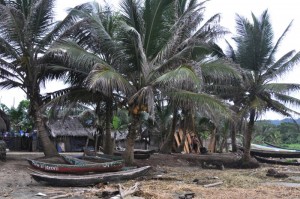 |
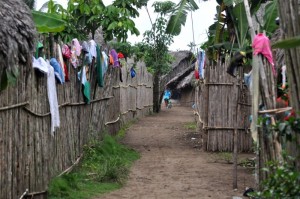 |
Before dinner, I strolled around the village and watched some young girls playing volleyball. Then I started talking with Yosidelis Martinez, a 15-year-old girl and her friends. I taught them how to count in English. At 5:30pm, she said she had to go home for supper and invited me to her home. I followed her and was delighted to meet her parents and six elder siblings. She already has 14 nieces and nephews and they all live under the same roof.
After dinner, I joined an optional crocodile viewing trip. We followed a river but only spotted one baby croc which tail was barely visible. I paid $3 for the trip but had hardly seen much.
The beaches close to the village are popular spots for leatherhead turtles to lay eggs. Hence the highlight of today’s programme was a night walk with a guide to spot turtles. We were thrilled to find the first turtle after hardly a short distance on the beach. It is an enormous turtle! Then we spotted four more turtles and spent over an hour watching how they dug up a hole before laying eggs and how they shovel sand over the eggs at the end of the labourious process.
According to our guide, these turtles can lay eggs four to 14 times a year! Each time, it can lay 60-80 eggs. I have watched turtles laying eggs in Karachi and East Malaysia. But the ones I saw here are big and most impressive. I did not get back to village till 11pm.
Day 4 (June 3) – As there’s a good chance to spot turtles on their way back to the sea around dawn on the beach, I decided to get up at 5am. When I arrived at the beach, I saw the guide assisted by two local men were already busy in helping a turtle to find its way back to the sea.
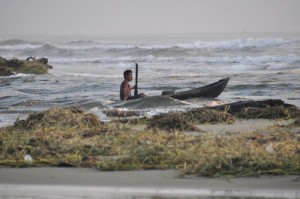 |
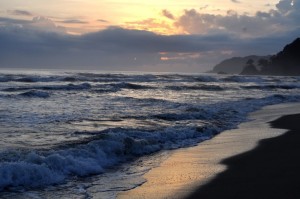 |
Apparently, this turtle had not laid the eggs and then got lost walking towards the village. It took them an hour and a half to get it back to the sea. We also found a baby turtle on the beach and I watched how it got into the water for the first time in its life. Then it disappeared under the water. Will it survive to become an adult? The chance is minuscule i.e. one out of 10,000!
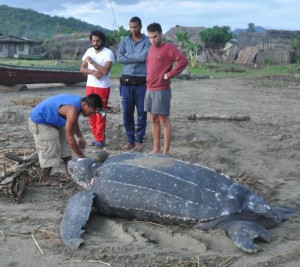 |
|
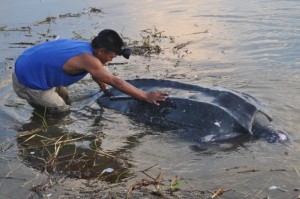
|
|
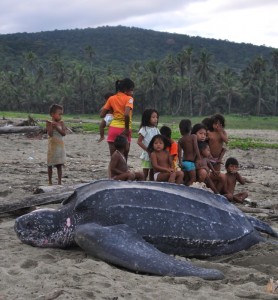 |
We also found a baby turtle on the beach and I watched how it got into the water for the first time in its life. Then it disappeared under the water. Will it survive to become an adult? The chance is minuscule i.e. one out of 10,000!
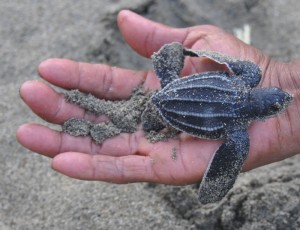 |
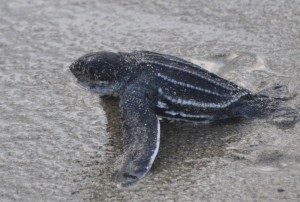 |
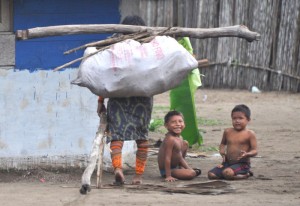 |
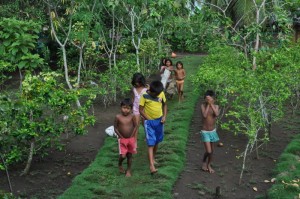 |
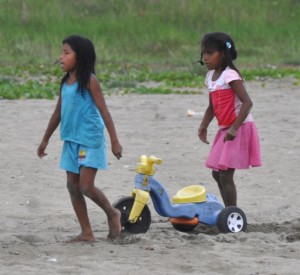 |
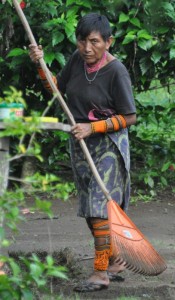 |
Olivia said we would leave at 10am for Puerto Obaldia to go through immigration procedures. As usual, things were a bit messy. We were told that 17 of us should go first and waited at the other end. I got on the first boat. But the boat just stopped outside the harbour. I did not know what was happening. Then a smaller boat brought 10 more people out and moved them to our boat. Then we had a 10-minute ride to Puerto Obaldia.
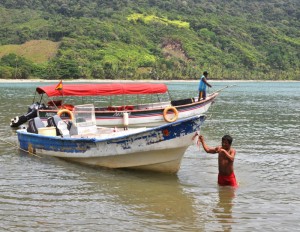 |
When the whole group arrived around 11am, we carried our bags to an army outpost. Then we went to the immigration office to hand in our passport with two photocopies of the passport enclosed. Finally I got my passport back with a stamp. The final step was to get our bag checked. We first put our bags in a line to enable the dog to sniff them for drugs. Anyone carrying drugs will be jailed for ten years! I was relieved when we were told to leave shortly after 12:30pm. We were back on the boat before 12:45pm. Here the whole procedure took about an hour and a half as compared with three and a half hours at the border with Costa Rica!
I carried my backpack and suitcase back to the boat. After a short ride, we were dropped off at Sapzurro, the border village on the Colombian side where we got into another boat. We finally arrived at Capurgána at 1:45pm.
Remarks
I am glad to return to Panama and make my way to Colombia by sea. Panama City with a modern part filled with skyscrapers and the timeless Casco Viejo is fascinating. People have warned me about thefts while locals always tell me to take a taxi. I have done the right thing by ignoring the well-intended advice. I find the public transportation cheap and fairly good (once you know your way around).
I have no problem wandering around the old and new parts of the city. Some parts of the city are indeed dilapidated and filthy and are in dire need of new infrastructures. But Casco Viejo, a living architectural museum, is atmospheric. I had a comfortable but cheap stay at the Magnolia Inn. I hope the ongoing restoration and tourism will not destroy this gem.
My 4-day trip through the San Blas Archipelago is tough but amazing not because of its scenery. The weather was not good and the boat is most uncomfortable (even by my standard). Luckily the sea was not too rough. But I had an unforgettable time on two islands: sleeping in a hammock and having the biggest lobster feast in my life! I like my time spent in Armila most and it is magical to watch five giant turtles laying eggs and following a lost turtle finding her way back to the sea
Panama is undergoing rapid transformation. It will be celebrating the centennial of the Panama Canal this year. At the time of writing the ‘Remark’, BBC is featuring Panama as a tourism destination. I am glad I have visited some remote but interesting part of Panama.


